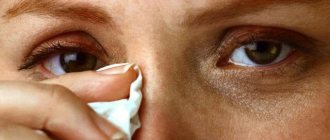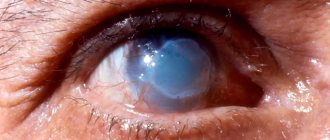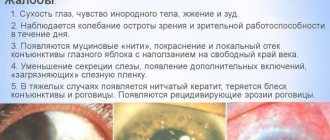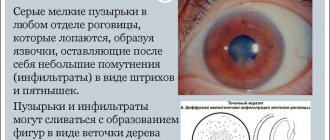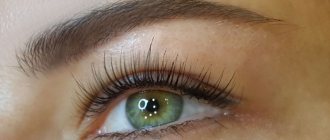Types and degrees of burns from welding machines
During welding, various types of energy are released. When exposed to them, the following types of burns are formed:
- thermal – the effect of heat (high temperature);
- light - a burn from the action of ultraviolet radiation that damages the eye membranes (in the absence of a mask it occurs immediately, in the presence of one it develops gradually);
- chemical - the appearance of caustic smoke (evaporation of zinc, hydrogen fluoride, nitrogen dioxide), which in rooms affects the mucous membranes, especially the bronchi and lungs;
- multifactorial damage - tissue damage due to the simultaneous action of several agents from welding.
The most common are thermal and chemical burns from welding, which cause harm to the skin. A spark can get on the skin, causing a burn, and the wound may become infected. The respiratory tract and eyes are affected by chemical fumes during welding. Light burns are also dangerous for the eyes.
A welding burn disrupts the integrity of tissues and causes temporary or permanent loss of function. The following degrees of damage are distinguished:
- first (mild) – redness of the epidermis; when the eyes are exposed to excessive light, the cornea becomes cloudy;
- second (medium) - the appearance of bubbles on the skin containing transparent interstitial fluid; areas of a whitish film form on the sclera of the eyes, which is removed using ophthalmic instruments;
- third (severe) – necrosis of skin areas, charring, damage to the muscle layer, the eyes are completely covered with a film that cannot be removed;
- fourth (super severe) – necrosis of the skin, subcutaneous tissue, muscles, membranes of the eye.
With the first two degrees of burn, it is possible to preserve the body's own tissues. When the skin is charred, it is degree four. In this case, tissue transplantation is necessary if the affected area is extensive.
Preventing burns during welding.
It is no secret that the welding process is associated with significant risks of injury, both from radiation and mechanical. Burns are possible with any type of welding, be it electric arc or gas, because they involve the release of heat. In addition, welders suffer from other types of radiation: ultraviolet, infrared.
To protect the specialist, welding work must be carried out in specially equipped places and exclusively in special clothing and protective equipment.
You can get a burn to the face when welding if you do not use protective shields and masks, or if this protective equipment is damaged.
Typically, such shields are equipped with a viewing glass that completely absorbs ultraviolet radiation and partially infrared. These same shields protect the welder’s face from splashes of molten metal.
In order to prevent possible injuries, work should always be carried out in special protective equipment; the integrity of clothing, a shield or glasses must be checked each time before starting work.
Also, during welding work, all safety regulations, rules for working with electrical appliances, gas cylinders, and open fire must be strictly observed.
Signs of skin burns and electroophthalmia
Welding burns that do not cause deep damage are not always recognized by the patient. The sooner the doctor provides help, the fewer health consequences there will be.
Signs of a skin burn:
- change in skin color: red, yellow, black;
- formation of blisters without pus;
- the welder feels a burning sensation, itching, pain;
- peeling of affected areas;
- rise in body temperature, accompanied by chills.
With electroophthalmia (eye burn), other symptoms appear:
- painful sensations in the eyes, spreading into the head and eyelids;
- foreign body sensation;
- increased production of tears as a defensive reaction;
- severe sensitivity to light;
- decreased visual acuity.
If these signs appear, it means that the person has an injury that requires immediate assistance. Take urgent measures on their own and call a doctor.
Signs of electroophthalmia
The term “electro-ophthalmia” is used to refer to an eye burn caused by powerful ultraviolet radiation while a welding machine is running.
All it takes to cause serious injury to the cornea and retina is a brief, unprotected look at the weld. The first symptoms of burns do not appear immediately, but after several hours the consequences of the injury will be as follows:
- redness and swelling of the eyelids and mucous membrane around the eye;
- severe tearfulness;
- itching and burning occurs;
- sensation of a foreign object in the eyes;
- high reaction to light, which is accompanied by headache;
- with degree 4 eye burns (which require long-term treatment), tissue necrosis may occur, which is accompanied by the appearance of a whitish cornea.
Depending on the extent of the damage, the symptoms will differ. Self-treatment methods are only possible for 1-2 degree eye burns.
If the exposure to ultraviolet radiation on the eyes was prolonged, then most likely the retina and cornea of the eye were seriously injured, and we may already be talking about 3-4 degree eye burns.
In case of such injuries, it is already necessary to consult a doctor, since neglect of treatment can cause vision deterioration or loss.
First aid in case of defeat
A welding burn always requires medical attention. While waiting for him, they carry out the procedures independently. An anti-burn agent (Panthenol) is applied to the body wound. To ensure that the product is completely absorbed, apply a bandage or gauze on top. If medications are not at hand, you can prepare a bath of slaked soda or kefir at home and dip the affected areas in it. After this, the skin is treated with an antimicrobial agent (Levomekol) to eliminate the risk of suppuration and blood poisoning.
If you receive a second or third degree burn from welding, you should urgently call a doctor, especially if the skin is charred. They independently give a painkiller (Nimesulide, Ketanov, Paracetamol), which the arriving ambulance team is warned about. In a hospital setting, the victim will receive the following assistance:
- removing foreign objects from wounds;
- removal of dead areas of the epidermis;
- application of anti-burn and antibacterial agents;
- anesthesia;
- artificial ventilation of the lungs when chemical fumes enter the respiratory system;
- tissue transplantation.
In case of electrophthalmia from welding, you need to know the procedure for providing first aid.
The organs of vision should not be rubbed or washed with running water.
There are the following emergency treatment methods for electroophthalmia from welding:
- rinse with clean water;
- instill vasoconstrictor drops that reduce inflammation and swelling (Vizin);
- in case of severe pain, it is necessary to drop lidocaine into the eyes - it eliminates pain (contraindicated for long-term use, as it reduces visual acuity);
- to eliminate the possibility of bacterial infection, place antibacterial ointment (Erythromycin) in the corner of the eyelid and drop Tsiprolet drops;
- give a systemic pain reliever (Nise, Ketorol).
If you have a facial burn, you should not self-medicate. If you act incorrectly, irreparable consequences can occur, such as scars.
First aid
As already mentioned, a welding burn can be of various types, severity, and localization. Providing first aid is one of the most important steps for successful further treatment. However, in some cases it will vary, and if done incorrectly, the condition can worsen significantly.
Permitted first aid
If you are injured while welding, you must take the following steps:
- Cool the affected area under running water or with ice packs and wrap ice in a clean, soft cloth.
- Disinfect it with a solution of Chlorhexidine, potassium permanganate or Furacilin.
- Treat with anti-burn spray (Panthenol, Olazol, Bepanten, etc.).
- For deeper and more extensive damage, call an ambulance.
What to do when you get a welding burn on your face? If your eyes are not damaged, the actions are no different from the instructions above. Cool the damaged area, carry out an antiseptic treatment and apply an anti-burn agent.
A first-degree welding burn is manifested by redness and slight pain; it is similar in nature to a sunburn, of course, if you are not exposed to metal particles. For these symptoms, it is permissible to use some folk recipes: kefir, sour cream, grated potatoes, sea buckthorn oil, but they should be applied only after first aid.
What not to do if injured as a result of welding work
When you have a burn to your face or any other part of your body from welding, you should find out what is strictly prohibited to do:
- Use vegetable oil, fatty creams or ointments. There are many recipes and fat-based preparations. Some of them, in rare situations, can really help, but not as a means of first aid. Initially, you need to talk with a doctor, establish the nature of the injury, and only then use such drugs. Fatty products create a film that does not protect the wounded surface at all; it blocks heat exchange with the environment, as a result - the skin heats up even more and the painful symptoms intensify;
- Some metals, for example, aluminum, when they come into contact with clothing, do not burn through it, but “melt” it and stick it to the skin. In such episodes, under no circumstances should you try to remove it; there is a high risk of damaging part of the upper tissues. This will cause serious consequences: formation of pus, inflammation, infection, necrosis;
- If you receive any burn, including from welding, do not use preparations containing alcohol. This will only provoke unnecessary irritation of already damaged areas;
- If you have already developed blisters, they should be seen by a doctor rather than opened. Such an action threatens external infection, the formation of purulent exudate and other complications.
Further therapy
After providing professional medical care, the patient is discharged with recommendations for further therapy:
- Bed rest for deep wounds. It is necessary to stay in a dark room to reduce eye strain.
- The use of ointments for burns (Bepanten, Eplan) for healing the skin.
- Local antibacterial drugs for the skin (Erythromycin) and eyes (Tsiprolet, Tobrex). Application time is 7-10 days.
- Non-steroidal anti-inflammatory drugs are dropped into the eyes to relieve swelling and redness (Indocollir). Vasoconstrictor drops (Visomitin, Octilia) complement the anti-inflammatory effect. They are used for no more than 5-7 days.
- For rapid tissue regeneration, agents are used that accelerate metabolism in cells (Solcoseryl) and improve blood circulation (Actovegin).
- After burns, the eye sclera begins to dry out. To prevent this, moisturizing drops (Artificial tears) are prescribed.
- For any damage in the affected areas. Interstitial fluid begins to accumulate. Cells of the immune system flock to the lesion. This is manifested by swelling, inflammation, and redness. To eliminate them, antihistamines (Suprastin, Zodak) are prescribed.
A burn from welding can cause irreparable damage to health. You cannot ignore your doctor's instructions. Assignments must be strictly followed.
Eye burn from welding - how to treat it?
Drug treatment consists of several points:
- The use of anti-inflammatory and non-steroidal drugs, such as Nise, Ibuprofen, Diclofenac, Clodifen, Prenacid.
- After this, it is necessary to drip drugs that have a metabolic effect into the eyes. The drug Taufon is able to restore tissue damage and eye performance in just three days of use.
- Treatment with wound healing agents such as Solcoseryl and Actovegin.
- The last stage of healing involves taking antibiotics to avoid additional infection. For this purpose, Oftaquix, Tobrex, Gentamicin, Tsiprolet drops are used.
For eye burns caused by welding, I use anti-inflammatory and non-steroidal drugs, such as Nise.
For mild eye burns caused by welding, treatment is also carried out with folk remedies:
- You will need to prepare cotton wool or gauze, which is soaked in tea leaves. You can use any that you have at home. The solution must be placed on the eyes until the discomfort and discomfort are eliminated. After five minutes, the gauze should be replaced with fresh one.
- You can also use chopped raw potatoes. It also needs to be applied to the eyes.
These were folk first aid remedies. After the symptoms have passed, treatment can also be continued using traditional medicine. But you should first obtain permission from your doctor, since these drugs should not become the basis of treatment. You should not prefer methods and means of traditional medicine to traditional medicinal methods.
As additional help, use a decoction of calendula or chamomile. It will require dried herb in the amount of one small spoon, pour hot water. After 10 minutes of infusion, the medicine is ready for use - a cotton swab is moistened in the solution and applied to the eyes.
Butter is also added to chamomile. The ratio is the same. The resulting porridge is transferred to gauze and applied to the eyes. 15 minutes is enough.
After 24 hours after a welding injury, a more radical treatment can be used - a mixture of honey and juice squeezed from aloe. The ratio of ingredients is one to one. This product will have to be dripped into the eyes twice a day. One drop is enough to relieve inflammation. This type of therapy at home is quite effective.
In most cases, the first degree of damage goes away after a few hours when treating the eyes with folk remedies, and there is no need to take additional measures.
Dangerous complications
The following complications of skin burns are possible:
- charring and tissue necrosis requiring transplantation;
- damage to the deep layers, especially with skin burns from welding on the face;
- partial loss of muscle function if nerves are affected.
The following complications are common with electroophthalmia:
- decreased visual acuity (temporary or permanent), blindness;
- formation of a cataract on the cornea;
- scars, ulcers on the eyes;
- periodic exacerbation of inflammation.
To avoid complications, a doctor is called immediately after injury. Medical assistance should not be provided by untrained people.
What not to do if you get a welding burn
When serious burns occur with the formation of blisters and deep damage to the skin, you need to seek medical help. If this is not possible, to prevent infection, the affected skin is disinfected. IT IS FORBIDDEN :
- Puncture any blisters that form. The liquid protects the skin from additional damage and works better than an antiseptic.
- Tear off the baked fragments of clothing stuck to it. Some alloys only melt the fibers, they turn into a sticky mass. If the clothes are torn off, the severity of the damage will increase. Such wounds get wet, become inflamed, and do not heal for a long time.
Welding burns are NOT treated :
- alcohol-containing liquids, as they irritate the skin, burn the wound, and increase pain;
- ointments and creams based on vegetable oils, they form thermal insulation of the affected area;
- all kinds of powders - they do not have any healing or protective effect and serve as an additional contaminating factor for the wound.
- Oil and creams are used in the process of restoring the dermis to protect young skin from the effects of atmospheric factors. The use of such means is strictly prohibited.
Safety precautions when working with a welding machine
To protect the skin of the face and organs of vision from radiation and welding fumes, equipment is used: overalls, mask, glasses, shield. The welding machine must be in working order, the ventilation system must be turned on. Grounding is required. There should be no flammable objects or combustible substances around the worker.
You cannot look at the welding arc flame with open eyes without glasses. When sparks appear, all areas of the skin must be covered.
If the wires catch fire, first turn off the welding device, then the transformer. Then the fire is covered with sand.
Working with welding for an untrained person will cause serious damage to health. Therefore, special training is important. If you receive a burn, immediately call a doctor, examine the victim and provide first aid.
How to avoid getting burns when performing welding work
In order to avoid injury, it is necessary to adhere to safety rules during work and use personal protective equipment:
- jacket and trousers made of thick fabric;
- special leggings made from natural materials;
- welder's shield, it will protect the face from radiation and thermal injuries, save the eyes from ultraviolet radiation; There are special shields with forced air supply, they are used in enclosed spaces.
Symptoms of welding in the eyes
The first thing that is felt after performing welding work in violation of safety is a sharp pain.
Considering that foreign particles are hot and move at high speed, painful sensations appear almost immediately. In this case, an increasing effect is noted, which is associated with the degree of sensitivity of the organ of vision. Signs of a burn are often observed on the skin of the face and hands (parts of the body not protected by protective clothing).
In addition to the pain syndrome, the victim feels the unpleasant sensation of the presence of a foreign object in the eyes (scale). There is an urge to wipe, wash and other types of influence. The symptom appears especially pronounced when trying to focus the gaze on any object or changing the position of the pupils.
The main symptoms of a burn include redness of the eyes. Red squirrels cannot be confused with simple fatigue or lack of sleep, as they are a rich color with thick veins of blood. Damaged eyes perceive natural or artificial lighting with difficulty; sometimes it is impossible to raise the eyelids when looking at bright light. Welding provokes a sharp increase in tear production, which is explained by the protective function of the organ of vision. The lacrimal glands try to free the eye from the foreign body.
If there is noticeable damage to the eye, the signs are visible to the naked eye. The consequences can be more than serious, including loss of vision. The affected area of the organ of vision often bleeds, and the pain syndrome is pronounced. With an extensive burn, a thin film forms on the surface.
First aid
What to do in case of a 1st, 2nd or 3rd degree welding burn to the eyes in order to alleviate the suffering of the victim and not harm him even more?
Experienced welders immediately sense if the cornea of the eye has been burned and immediately stop working. If this is not done, the damage will affect deeper tissues. Then follows a set of first aid measures:
- Wash and rinse your eyes thoroughly with clean drinking water, potassium permanganate, tea leaves or chamomile decoction (all in low concentration). Do not skimp on liquid; copious rinsing is indicated.
- Cover the windows with dark curtains or remove the victim to a place protected from light.
- Eye drops will help relieve pain and swelling from burns: “Vizin”, “Visoptin”, “Proculin” (for eye burns, drip 1 drop while lying down). Special products will speed up the healing of affected tissues, reduce itching and pain intensity. For mild trauma to the mucous membranes, therapy continues for 3 days until the discomfort is completely eliminated. If the pain is very severe, the burned eyes are instilled with Lidocaine 2% or Tetracaine every 12 hours.
- Take a painkiller tablet (“Spazmalgona”, “Analgina”). If it’s really bad, you can inject Ketanov intramuscularly.
- To relieve inflammation, drink Nimesil, Diclofenac, Nimesulide.
- Using a sterile napkin or a clean handkerchief, remove metal particles and other foreign bodies from the eyes. If this is not possible, seek medical help immediately.
- To relieve inflammation, cover your eyes with a cloth moistened with cool water. Do not use ice!
- Squeeze a little antiseptic ointment (Tetracycline, Solcoseryl) into the conjunctival sac.
- In case of stage 4 burns, it is necessary to call an ambulance and relieve the suffering of the burned person with an anesthetic injection.
Symptoms of electroophthalmia
Before using welding eye drops, you should decide what degree of burn you have. Each degree of electroophthalmia has its own symptoms. Among them are:
First degree (mild)
- Mild itching of the eyelids;
- Slight redness of the conjunctiva begins;
- Burning in the eyes;
- The cornea of the eye becomes more cloudy.
Second degree (medium)
- Erosion forms on the cornea;
- A film forms on the conjunctiva;
- The eye becomes very sensitive to light;
- Periodically there is a sharp pain when moving the eyeballs.
Third degree (severe)
- The eyelids begin to swell;
- A lingering pain occurs;
- The cornea becomes very dark due to opacity;
- It feels like there is a foreign element in the eyelid;
- Vision begins to decline sharply.
Third stage of electroophthalmia
Fourth degree (extreme severity)
- The death of eye tissue begins (necrosis);
- When you try to open your eyelids, severe pain begins in your eyes, so that it becomes impossible to do so;
- The cornea becomes colorless or very faded;
- The conjunctiva gradually dies;
- Complete blindness occurs.
At what stages can drops be used?
Eye drops for welding burns can be used in almost all cases, except for the last fourth stage of the burn, where there is no point in using any medications. But they are not equally useful at all stages. For example, at the third stage, a whole range of medications is needed, so you cannot use eye drops alone for a welding burn. They will be an addition to the overall complex; here you need professional advice from a specialist for each specific case.
At the same time, in the first stage they are one of the best means for recovery. There are also medicinal ointments for these problems, but they are much more difficult to digest, therefore, the use of drops is more effective. Thanks to this, they have gained such high popularity. Thus, in the first, second and third stages, a suitable type of medicine in the form of drops can be used.
What drops to use for eyes after welding
There are several varieties that are most often used in this case. Among them are:
Visine is a medicine that belongs to the sympathomimetics, used in ophthalmology. It has a local decongestant effect. This is a fast-acting drug, the effect of which occurs within a few minutes. It does not enter the bloodstream, but long-term use can cause negative consequences. Tissue swelling is achieved through vasoconstriction. The effect lasts up to 8 hours.
Appearance of the drug Vizin
Proculin is a solution that has a vasoconstrictor effect. It also refers to fast-acting drugs. The medicine helps solve problems with eye pain and quickly return to normal. Used primarily after first stage burns. It is not recommended to use Proculin continuously for prevention.
Proculin drops for eyes
Visoptin is a colorless solution with no visible particles. It contains tetrizoline hydrochloride as the main substance, as well as boric acid, benzalkonium chloride and other substances as additional substances. Has an anti-edematous vasoconstrictor effect. It reduces the degree of swelling of the conjunctiva, relieves pain, tearing and burning sensations in the eyes.
Visoptin eye drops
Instructions for use
Having figured out what to put in your eyes after welding and how to treat an eye burn, it’s worth figuring out exactly how this can be done. Almost all drops of this type are used conjunctivally. They are contraindicated for children under seven years of age, but adults have their own permissible doses. As a rule, this is 1-2 drops per eye and no more than three times a day. The maximum duration of taking the medicine is up to 4 days; a longer period is possible only with the permission of the doctor. It is best to use them immediately after the onset of pain, and re-use them only when the pain has not stopped.
How to treat eye burns from welding
Timely therapy will not only relieve inflammation, but also minimize the risk of complications. The main method of treatment for electroophthalmia is drops for eye burns, for pain relief, accelerating tissue regeneration, and restoring vision.
Some people prefer traditional medicine recipes, achieving good results. But for any method of treatment there is a rule: do not use it without a doctor’s recommendation.
In extreme cases, in severe forms of burns and severe damage to the cornea, laser microsurgery is prescribed.
For mild eye lesions, drops with vasoconstrictor, anti-inflammatory and anti-edematous effects are used. They relieve itching and irritation, reduce swelling of the conjunctiva.
However, you should not self-medicate, because each drug has a number of contraindications and side effects. So, drops for eye burns from welding for the treatment of the first stage:
- "Visoptik" - eliminates pain, burning of the mucous membrane, lacrimation.
- "Octilia" - relieves irritation and swelling, stops the inflammatory process.
- "Vizin" - relieves swelling and inflammation. The effect occurs within a few minutes and does not subside for up to 8 hours. The medicine does not enter the bloodstream. (not recommended for long-term use, as it is addictive).
- "Proculin" - quickly relieves pain and relieves inflammation. The best remedy for the treatment of welding eye burns of the first stage (not used for prevention).
If your eyes are severely burned by welding, drops with a regenerating effect are prescribed. These drugs heal damaged mucous membranes, restore nerve endings, resolve hemorrhages, and strengthen vascular walls.
Moreover, the use of such drops is an effective prevention of possible complications. Most often, ophthalmologists recommend:
- "Emoxipin";
- "Vitasik";
- "Derinat";
- "Tobrex".
Regenerating drops are prescribed after an examination of the visual organs. For each case, a separate drug is selected and an individual treatment regimen is drawn up.
Having injured the eyes from welding, a person experiences a lot of discomfort. They could have been endured if not for the pain that enveloped the eyes and encircled the entire head.
To reduce pain, the eyes are instilled with special painkillers:
- "Alcain";
- "Lidocaine";
- "Tetracaine".
After injection into the conjunctival sac, an almost instant “freezing” effect is created. Drops block pain and relieve itching. Use medications twice a day, no longer than 2 days after injury.
